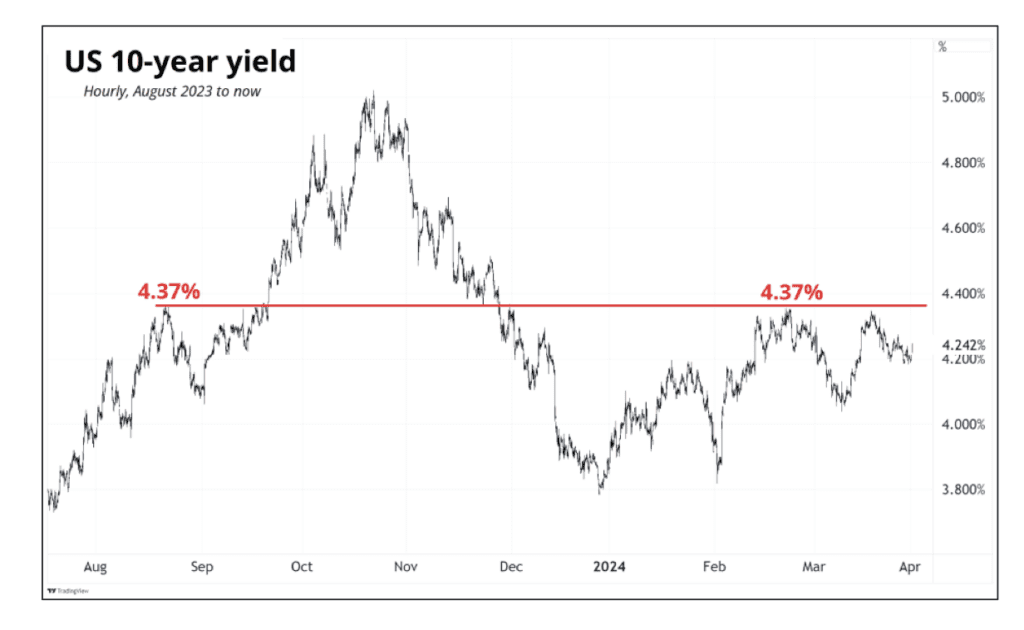Major currencies, equity markets and the price of crude oil since 8th June – the cycle low in the US Dollar – have exhibited reasonably limited directionality, narrow trading ranges and very low volatility, with the notable exception of currencies in Latin America.
However this is not a case of more confident financial market participants finding their feet, in our view. Rather it is a reflexion of greater global risk aversion, with financial markets unable to see through the smoke and reluctant to pit themselves against their peers and test monetary authorities’ resolve at a time of still acute uncertainty on many levels.
ERI-C Webinar – Thursday 2nd July (09.00 & 14.00 London time)
I will be presenting on “Opportunities In Global FX & Rates: Amid The Misguided Debate On The Shape of Recovery”
- Misguided debate about the shape of a global recovery and nonsensical proliferation of letters;
- Unprecedented monetary and fiscal stimulus driving equity bubblebut bogeyman of hyperinflation;
- US Dollar, Swiss Franc, Yen and gold “safe-haven”outlook – myth vs reality;
- Key drivers of FX & rates markets,including path of national lockdowns, central bank and government policies, renewed focus on domestic macro data and market positioning;
- FX volatility & directionality, with a focus on scope for EM currencies(including Renminbi),Sterling, Euro and Aussie and Kiwi Dollars to outperform or underperform; and
- Cost-benefit of reasonably low international oil price.
To register in advance and be sent joining details, alongside rights to an exclusive special research offer, please click on your preferred Thursday 2nd July session link:
09.00: https://us02web.zoom.us/webinar/register/WN_K5EFQgzgRUGSyKnDRMztkQ
14.00: https://us02web.zoom.us/webinar/register/WN_gUviHGXfQb6NXNjnrc6iIQ
Covid-19 and the still long list of “known unknowns”
Six months into the coronavirus outbreak and governments, central banks, businesses, households and financial markets are still facing acute uncertainty at every level. We know far more about covid-19 than we did back in January and have three months worth of data pertaining to the complex mechanics and widespread implications of national lockdowns, social distancing and associated measures. However, every answer has thrown up new questions and what we know we don’t know is arguably still overwhelming.
At the heart of these critical “known unknowns” is the future (and arguably current) rate of transmission of covid-19 (R0), the fluid evolution in the number of new cases and death rates and the complex reaction function of policy-makers and other economic actors often faced with the harrowing trade-off between saving lives and saving economies. While most European and Asia-Pacific countries have seen a sustained fall in daily deaths related to covid-19 in recent weeks or months, many Emerging Market (EM) economies, particularly in Latin America and Africa, are still in their “first wave”. The number of cases and deaths in Brazil, Mexico, Colombia, South Africa, India and Indonesia is still rising rapidly in the face of often loose national lockdown policies.
Moreover, a number of developed economies, including South Korea, Singapore, the United Kingdom, Germany and Poland, have experienced localised spikes in the number of cases in absolute terms and relative to the (higher) number of people tested, as have states (Victoria in Australia) and major cities (including Tokyo, Beijing and Leicester). A growing number of US states have also recorded in recent weeks a material rise in case numbers.
Individual countries’ response has varied but invariably plans to re-open economies and ease social distancing laws or guidelines have been diluted, temporarily shelved or even reversed. In the US at least 16 states have paused or rolled back their reopening plans. The number of new daily deaths in these developed countries still remains low compared to a few months ago. However, the odds of “localised” spikes morphing into country-wide “second-waves” is arguably one of the key metrics currently guiding national governments’ decisions at both a health and economic level, including whether and at what pace to unwind or, as has been the case in recent weeks, re-tighten lockdowns at a city, state or country level.
In the face of acute uncertainty markets have become more conservative
What policy-makers know they don’t know will continue to influence their containment plans, as well as domestic measures to support economic growth while ensuring the functioning of financial markets. However, as in the case of the UK, the shelf-life and breadth of critical but costly measures taken by governments and central banks to support household incomes and the balance sheets of corporates and financial institutions remains uncertain.
This in turn raises questions about the extent to which the private sector will have both the opportunity and the financial firepower to spend and invest going forward (see United Kingdom: Back to 1999…and to the future, 26th June 2020). The outlook for domestic let alone global GDP growth rates therefore remains at best uncertain, in our view (see Shape of Recovery: Square Root & Hockey Stick, 5th June 2020).
Even interpreting key historical macro data for May-June requires great care, given sizeable (and perversely) favourable base effects and the impact of unprecedented government and central bank measures on indicators of economic activity. These include domestic data for labour markets, consumer confidence, consumption, inflation, borrowing, saving rates, investment, public and private sector balance sheets, leading indicators (such as Purchasing Manager Indices) and ultimately headline growth.
Faced with multiple layers of doubt and uncertainty, financial markets in the past three weeks have become increasingly conservative, often unwilling to take sizeable, long-term, directional positions in currencies, global equities and crude oil and conversely been quick to take profit or cut losses. Central banks, particularly in Asia and other EM economies (including Turkey), have also arguably played their part in fading volatility in their currency and fixed income markets. Major central banks, including in the United States, China, Switzerland, Australia and New Zealand, have also either through policies and/or verbal intervention tried to steer their currencies’ medium-term trends, admittedly with varying degrees of success.
This has translated in both reasonably limited directionality and very low volatility, with asset prices since the first week of June on the whole remaining within narrow trading ranges (weak directionality of course does not always go hand in hand with low volatility).
Currencies, equities and crude oil in narrow ranges…with a few important twists
Most major currencies have not appreciated/depreciated much versus the Dollar and traded in reasonably narrow ranges since the cycle low in the US Dollar on 8th June. However, this price action masks an underlying trend of greater global risk aversion in our view.
We estimate that out of 30 major developed and EM currencies:
- 14 have depreciated only 1-4% versus an appreciating US Dollar;
- 6 have depreciated less than 1% (including notably the Euro);
- The Chinese Renminbi has been broadly unchanged; and
- 6 currencies have appreciated by less than 2% (see Figure 1).
As a result, these currencies in Nominal Effective Exchange Rate (NEER) terms have moved very little in the past three weeks and thus generated little imported inflation or disinflation and their economies have gained or lost little export competitiveness (see Figure 2). We estimate that out of 29 NEERs[1], 20 have appreciated or depreciated by less than 2.1%.
However, this on the whole relatively benign performance of major currencies masks an underlying trend of greater global risk aversion, in our view.
- The US Dollar, which has traded like a safe-haven currency for most of this year in our view, has appreciated the most over this period, while the safe-haven Swiss Franc and Japanese Yen have also been amongst the outperformers (see Figures 1 & 2).
- The New Zealand Dollar has weakened about 1.6% versus an appreciating US Dollar and 1.1% in NEER terms since its 19-week high on 8th June (see Figures 1 & 2). Markets have seemingly taken note of the Reserve Bank of New Zealand statement at its 24th June policy meeting on June that “The appreciation of New Zealand’s exchange rate has placed further pressure on export earnings”. However, the Kiwi Dollar NEER was still up 2.1% in June. Markets have seemingly responded to the fact that New Zealand is the only major country which can lay claim to having almost eradicated covid-19. Moreover, the underlying trade balance continues to improve, with the 3-month rolling goods trade surplus hitting a record-high of NZD 3.3bn in May.
- A GDP-weighted basket of low-yielding EM currencies has been broadly stable versus the US Dollar thanks largely to the relative stability of Asian currencies (with the exception of the high-yielding Indonesian Rupiah) and despite the sharp sell-off in the Chilean Peso (-6.7%) and to a lesser extent Hungarian Forint (-3.6%) – see Figures 1-3.
In a world of acute uncertainty Latin American and oil currencies have weakened the most
Conversely, EM and/or oil currencies have weakened the most with Central and Latin American currencies hit the hardest. The common factors underpinning these underperforming currencies are the fact that:
i) They are Central or Latin American currencies (and therefore regional contagion may have played a part); or
ii) They are high-yielding EM currencies (and thus more risk-sensitive); or
iii) Their countries are still recording a rise in daily covid-19 cases and deaths (see above); or
iv) Their central banks cut policy rates in June (and thus removed some yield support from their currencies); or
v) Their economies’ exports of crude oil/petroleum products account for a high share of total goods exports and thus usually sensitive to developments in the price of crude oil; or
vi) A combination of the above or all five in the case of the Brazilian Real and Colombian Peso (see Figure 4).
Of course the impact of central bank monetary policy on their currencies depends on a number of factors, including the timing of policy rate cuts, whether the rate cut was priced in and the extent of central bank FX intervention. Other domestic and external factors also likely had an impact on these currencies’ relative performance. For example the ongoing depreciation in the Chilean can be partly attributed to the central bank having stepped back from selling Dollars in the FX market and a volatile domestic political situation. The number of daily covid-19 deaths has remained quite high in the past fortnight (at around 200) due in part to spike in covid-19 cases and deaths among the mining working population.
US Dollar’s (unwelcome) new lease of life
Throughout the first five months of the year and first half of June the US Dollar was inversely correlated with the S&P 500 and effectively traded like a safe-haven asset (see Figure 5). Markets sold Dollars when global risk appetite was strong on the premise that Dollar demand (from other countries and central banks) would be weaker and they largely ignored the relative strength/weakness of domestic macro data.
Price action in the past fortnight has been modest but this tight inverse correlation between the Dollar NEER and S&P 500 has somewhat broken down. Both the S&P 500 and Dollar NEER have appreciated about 1.1% since 15th June, according to our estimates (see Figure 2 and shaded area in Figure 5). This will be an unwelcome development for (mostly EM) sovereigns and corporates with Dollar-denominated debt.
Our interpretation is that very loose central bank monetary policies and Dollar liquidity injections, including from the Federal Reserve, and stimulative fiscal measures in conjunction with signs of a global economic recovery have proven sufficient to put a floor under global equities, including the S&P 500. At the same time a number of factors have modestly appreciated the Dollar.
First off the 6.5% depreciation in the Mexican Peso (which has a weight of about 13% in the Dollar NEER) has single-handedly accounted for about 40% of the Dollar NEER’s 2.4% rally since 8th June, according to our estimates (see Figures 1 & 2). Moreover, the faster rebound in US economic activity – both relative to many other major countries and to analysts’ expectations – has added to the Dollar’s allure. In a nutshell we think that markets are re-focusing on macro data as a barometer of the impact on economic activity of domestic policies, including the easing of national lockdowns. Finally, we suspect that more risk-averse foreign investors may have reduced their Dollar hedging (selling) ratios when purchasing US equities.
Most currencies trading at the extremes of narrow ranges versus the Dollar
So with the exception of Central and Latin American currencies, major currencies have either depreciated only modestly versus the US Dollar or in a smaller number of cases appreciated incrementally since 8th June. Moreover, most 3-week trading ranges against the Dollar have been narrow[2] (see Figure 6). The corollary of course is that most currencies are currently trading at or near their weakest or strongest levels versus the US Dollar. The only exceptions of note are the Austrian Dollar, Israeli Shekel, Korean Won, Polish Zloty and Swedish Krone which have recently moved away from their extremes.
A number of Asian currencies, namely the Taiwan Dollar, Indian Rupee, Philippines Peso and Thai Baht are trading at the strong end of their very narrow ranges. In particular the Thai Baht NEER has appreciated over 2% in the past three weeks to a five-month high which may invite central bank FX intervention to slow, cap or even reverse this trend in order to maintain Thai export competitiveness, in our view
Global FX, equity and crude oil volatility has collapsed
Volatility in major currencies, global equities and the price of crude oil continued to tumble in June and is down significantly since the peak in global risk aversion in mid-March when major economies, mostly in Asia and Europe, were put into lockdown to contain the covid-19 pandemic. Daily moves in currencies, equity markets and crude oil, which rightly or wrongly are often attributed to the latest covid-19 headline or policy announcement, have become far more “orderly”. However this is not a case of more confident financial market participants finding their feet, in our view, rather a reflexion of their inability to see through the thick smoke and reluctance to pit themselves against their peers and test monetary authorities’ resolve at time of acute uncertainty.
Global FX volatility is back below its 10-year average
Our measure of realized global FX volatility – the 10-day standard deviation in the daily percentage change in a turnover-weighted basket of 32 major currency pairs against the US Dollar (using spot closing prices) – has fallen from a peak of about 1.45 on 26th March to 0.4, below its 10-year average of about 0.5 (see Figure 7). In the past month volatility versus the US Dollar has either been stable or fallen in all major developed and EM currencies, with the exception of Sterling and unsurprisingly the Mexican and Chilean Peso and Brazilian Real (see Figure 8).
Daily volatility in the Turkish Lira has collapsed to near zero, with material Central Bank of Turkey intervention in the FX market having pinned the USD/TRY cross to around 6.85 since 12th June.
The other ten least volatile pairs are all Asian currencies according to our estimates. We attribute this in part to the willingness and ability of Asian central banks to keep their currencies broadly aligned with the currencies of their main trading partners – namely the Chinese Renminbi which has been particularly stable against the Dollar in recent weeks (see Figure 9). We developed this theme in Conservative FX markets testing (some) extremes, 12th May 2020). Volatility in the safe-haven Japanese Yen has inched higher in the past month but remains very low both in absolute terms and relative to other currencies.
In line with our expectations the People’s Bank of China (PBoC) fixed the USD/CNY central parity rate higher (weaker Renminbi) in May, arguably in retaliation to growing tensions between the US and China, including over trade (see Chinese Renminbi – Canary in the coal mine, 28th May 2020). However, since around 8th June the PBoC has kept the USD/CNY fix (and by extension the spot rate) in a very narrow range and only allowed the Renminbi NEER to appreciate modestly (see Figure 9).
Notably global FX volatility never reached the highs recorded at the peak of the great financial crisis in November 2008 for a number of reasons, which we detailed in Virus, volatility and valuations (27th February 2020), including:
i) Emerging Market central banks’ tight FX management, including FX intervention to smooth out currency moves;
ii) A number of developed central banks (including the Swiss National Bank) stepping up their FX intervention to tame their currencies;
iii) The relative stability in the USD/CNY cross which has muted volatility in most Non-Japan Asian currencies;
iv) Central banks’ extensive use of Dollar swap lines; and
v) Financial product regulation and greater use of algorithmic trading.
US Dollar directionality notable but daily volatility points to orderly moves
By extension realized volatility in the US Dollar NEER – the trade weighted average of exchange rates with the United States’ main trading partners – has also fallen sharply (see Figure 10). The 10-day standard deviation in the Dollar NEER has more than halved since its peak of about 1.15 on 26th March to 0.44 currently, according to our estimates.
However, volatility remains well above the depressed levels which prevailed between in the six months to early March 2020 when the Dollar NEER traded in a very narrow range of only 2.8%, according to our estimates. The reason volatility in the Dollar NEER remains quite high by historical standards and has not fallen as much as global FX volatility is that some of the currencies of the United States’ main trading partners (which have a significant weight in the Dollar NEER) have remained volatile. These include the US Dollar-Mexican Peso exchange rate as detailed above.
Realized equity volatility has tanked, implied volatility a little more sticky
Realized volatility in the S&P 500 has tanked and is only marginally higher than in early 2020 and in preceding years (see Figure 11). Implied volatility, as measured by the CBOE VIX index, has fallen from a peak of 83 in mid-March to below 30 but is still double the average level seen in the prior 14 months.
Crude oil price very stable and daily volatility almost back to “normal”
Finally the price of Brent crude oil has been stuck in a very narrow range around $40/barrel in the past month. Daily realized volatility in the price of oil, which unlike volatility in global FX and S&P 500 spiked far higher in March 2020 than it did during the 2008-2009 global financial crisis, fell in the wake of OPEC+ countries agreeing on oil supply cuts on 9th April and has since come crashing down (see Figure 12).
[1] We have not calculated the Israeli Shekel NEER
[2] The percentage change could of course be small but the range wide if the currency had large swings but ended near its starting level. Conversely the percentage change could be large but the range narrow if the start and end points were respectively the weakest and strongest points in the range.



















